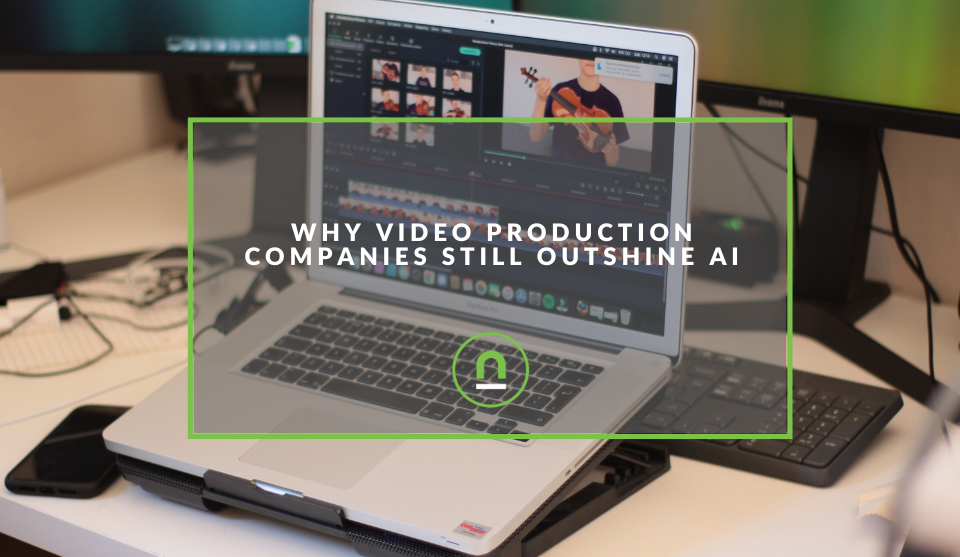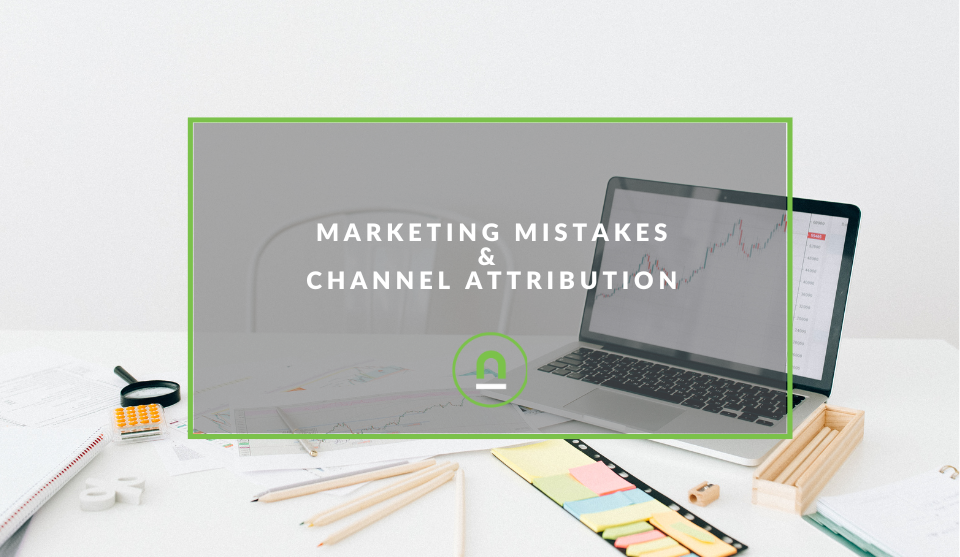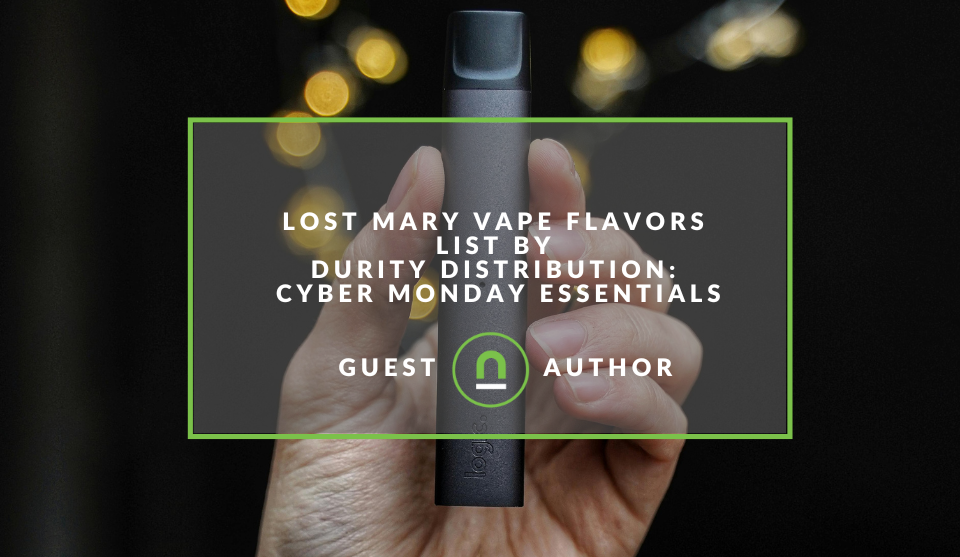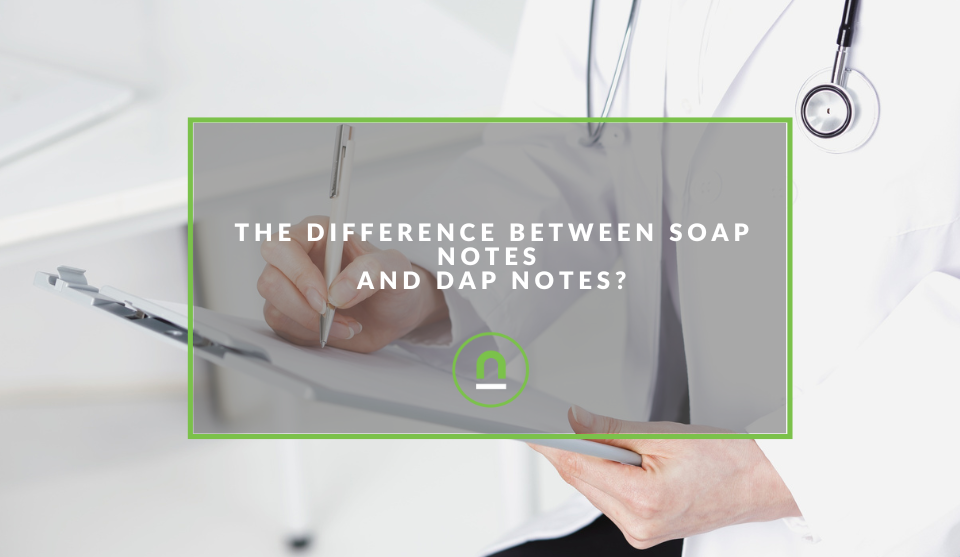Recent posts

nichemarket Advice
Why Video Production Companies Still Outshine AI
24 December 2025

Press Releases
Where You Can Find International Remote Jobs For South Africans
23 December 2025

Money Talks
Why Cross-Border Payments Are Slow, Tedious, and Expensive
17 December 2025

Money Talks
The Rise Of Trading Platforms In South Africa
16 December 2025
Popular posts
Extravaganza
Trending Music Hashtags To Get Your Posts Noticed
24 August 2018
Geek Chic
How To Fix iPhone/iPad Only Charging In Certain Positions
05 July 2020
Extravaganza
Trending Wedding Hashtags To Get Your Posts Noticed
18 September 2018
Money Talks
How To Find Coupons & Vouchers Online In South Africa
28 March 2019
Marketing Channel Attribution Is A Failing Marketing Strategy
23 July 2024 | 0 comments | Posted by Che Kohler in nichemarket Advice
I've spent enough of my life hunkered down behind a spreadsheet or some Dashboard (Looker Studios, PowerBI, or Tableau), data mining for insights to present to management or clients; it's a labour of love and one I have my fair share of issues with, especially when every time I have to report, I have to debunk the same assumptions.
Since some ideas have crystallised in people's heads, they really should have been binned a long time ago. The two triggering events that set me off when faced with reporting are rank analysis tracking and attribution modelling.
Let me tackle rank tracking for a second.
In the early days of search, SERPs were pretty static, and the majority of people received a similar experience, so it was safe to assume that these rankings are what most of us would see; it's where the idea I want to rank for A term + B term comes from and lives on today.
Google from the early 2000s would like their white paper on page rank back, please.
You'll hear it all the time: In the SEO space, what strategy do I want to rank, or why aren't we ranking for "service+location"? Is the bane of any SEO's existence enough to drive them into a deep state of depression?
- Why? How come?
- How do you know it converts?
- How do you know there's volume?
- Is your site within the realm of the competitors?
Say it with me and say it is a louder for those at the back, but Ranking Doesn't Equal Traffic. Even if you rank high for a keyword, it doesn't guarantee users are searching with the intent to convert (buy, subscribe, etc.). The keyword might not be relevant to your target audience.
Another factor that might break your brain is that human beings are not bots; they don't all use the exact keywords in the same order and have different ideas for what satisfies this query and its intent.
Rankings on a specific keyword don't matter as much these days due to Personalized Search. Search engines chop and change results based on user history and location. A high rank for you might differ from another user, making rank tracking less reliable.
People are different: Just because there's an average number of people searching for a keyword doesn't mean they all have the same amount of disposable income. If you're ranking high for low LSM users chasing volume but low for high LSM users, you'll find the keyword worthless despite the traffic.
Okay, enough about my SEO pet peeve tangent; let's get on to attribution.
Attributions And The Basic Assumption
If there is one marketing assumption that makes me want to run at platform nine and three quarters with full speed and hope that I hit the wall, it's the idea that last-click attribution is the be-all and end-all.
It's the industry standard of a user converted, and the source says paid search or meta ads; that must be how they found their way to the buy button and the only thing that influenced them.
I swear if I hear that nonsense again, I'm going to run up on you like a spider monkey throwing seven different kinds of smoke and trust me; you don't want the drama.
While we do have assisted conversion reports, they're barely considered in any form; every report consists of whether a human passed the threshold for conversion. What was the last cookie saying in their browser?
Oh, it was direct; oh no, what will we do?
Guess what? Direct is on the rise, and there's not a damn thing you can do about it.
Collecting data Only To Misinterpret it
Today's digital marketing reports consist of understanding where your last customer engagement come from, but it is no longer enough since it's not the full picture.
Marketers need to delve deeper, tracing a customer's intricate path before converting. The truth is that one-channel interaction does not make a conversion; it's a series of interactions, and some of them are out of your well-crafted control, like Word of Mouth.
This is where marketing channel attribution steps in, acting as a misguiding compass that guides marketers towards the most impactful marketing strategies.
It oversimplifies the life cycle of the customer; damn the comment they saw on YouTube, damn the email they received, their browser says their last state was a paid ad from Google search, therefore Google search paid ads converted users, let's go out and do some more paid advertising.
What is Marketing Channel Attribution?
Marketing channel attribution is the analytical practice of assigning credit to the various marketing channels (email, social media, search ads, etc.) that influence a customer's journey towards a desired action, typically a conversion (purchase, sign-up, etc.).
It's about understanding the interplay between different touchpoints – the moments where a customer interacts with your brand – and how each contributes to the final conversion.
How Does Attribution Work?
Imagine a customer who sees a social media ad for your product, clicks on a search engine ad for more information, and finally subscribes to your newsletter and makes a purchase.
Attribution models help determine how much credit each touchpoint (social media ad, search engine ad, newsletter) deserves for the final conversion.
Here's a breakdown of the process:
- Data Collection: Marketers leverage analytics tools to track customer interactions across various channels. This includes clicks, website visits, form submissions, and purchases.
- Touchpoint Identification: Each interaction a customer has with your brand becomes a touchpoint. Attribution models analyse the sequence of touchpoints leading to a conversion.
- Credit Allocation: Different attribution models assign credit (a percentage of the conversion value) to each touchpoint based on specific rules.
The Attribution Model Menagerie
Marketers have diverse attribution models at their disposal, each with its own strengths and weaknesses.
Here are some of the most common ones:
- Last-Touch Attribution: This model assigns 100% credit to the last touchpoint before conversion, assuming it had the most significant influence. (Flaw: Ignores earlier touchpoints that nurtured interest)
- First-Touch Attribution: Here, the first touchpoint (e.g., initial social media ad) gets all the credit. (Flaw: Underestimates the impact of later interactions that might have nudged the customer towards conversion)
- Linear Attribution: This model equally distributes credit across all touchpoints in the customer journey. (Flaw: Doesn't account for the varying influence of different touchpoints)
- Time-Decay Attribution: This model assigns more credit to touchpoints closer to the conversion, acknowledging that recent interactions have a stronger influence.
- Position-Based Attribution: Credit is divided between the first and last touchpoints, with some models giving a higher weightage to one over the other.
- Custom Attribution Models: These allow marketers to define their own rules for credit allocation based on their understanding of the customer journey.
While all models have pros and cons, most of them are tossed in favour of last click because it seems to be the most profitable for ad networks like Google and Meta.
They'll push last click down your throat because they know it juices their numbers and gets you to keep paying. Marketing agencies and performance marketers will also opt for the last click, not because they're greedy but because this model gives them the benefit of the doubt when crediting a purchase to their efforts.
I wouldn't say they're being dishonest; they're just relying on a lack of understanding of how attribution works.
The Tracking Tightrope: Why Attribution Has Become Harder
The rise of privacy regulations and ad blockers has made tracking customer journeys significantly more challenging.
Here's why:
- Limited Data: Data collection restrictions make it harder to attribute conversions accurately as customer touchpoints become fragmented across various devices and platforms. Cross-Device Attribution: Customers often switch between devices during their journey, making it difficult to connect touchpoints across different platforms.
- Ad Blockers: With ad blockers on the rise, marketers lose valuable data points when customers don't see specific ads. Not only that, but it's normally the savvy, high-value customers blocking your tracking scripts. Yes, your most valuable cohort is going incognito.
- Algo internet and the growth of dark social: A growing portion of people are over the newsfeed nonsense. We've moved to instant messaging, chat apps, or native apps, which don't often pass on any tracking, so clicking on a link from these services will be classified as direct traffic.
- Trained not to click: So many of our interactions on the modern internet involve zero clicks. Search engines feed us instant answers, social media apps push for native content and discourage us from clicking out, and while we rely on clicks as evidence of engagement, it doesn't mean the seed is not planted in the consumer's brain.
I'll give you an example: someone searches curry recipes on TikTok, sees a brand of spices, screenshots the brand, and drops it into Google Image search to find and purchase it. Does that mean Google Images was the driver of the sale?
Yes, in most marketers' attribution models. So, what do we do with that information? We react. We had better get more of our product images in Google search. Come on.
By the way, this doesn't mean TikTok is a search engine, and if anyone wants to disagree with me, I am ready to fight you physically; come on, DM me!
I'd like to attribute some haymakers your way!
**Begins shadowboxing**
Flawed Assumptions: The Pitfalls of Attribution
While attribution models offer valuable insights, some inherent assumptions can lead to skewed results:
- Linear Customer Journey: The assumption that customers follow a linear path from first touchpoint to conversion often overlooks the cyclical nature of modern customer journeys.
- Singularity of Influence: Attribution models often assume a single channel dominates the decision-making process, neglecting the collaborative influence of different channels.
- Short-Term Focus: Many models prioritise recent touchpoints, disregarding the long-term influence of brand awareness campaigns.
I can't tell you how many times I've heard someone say oh, email only gives us 1% of our traffic; let's stop it; it's a waste of time, only to find out that when they stopped, all other channels started to drop in their performance too.
Sure, email click-through might be low, but that doesn't mean it's not having some knock-on effect on the path to conversion.
The Price of Misattribution: Consequences of Flawed Assumptions
Relying on flawed attribution models can have detrimental consequences:
- Wasted Budget: Misattribution can lead to over-investment in less effective channels while neglecting high-performing ones.
- Disjointed Marketing Strategy: Attribution models that don't consider the entire customer journey can lead to a disjointed marketing strategy that fails to address different stages of the conversion funnel.
- Ineffective Optimisation: Focusing on the wrong touchpoints makes it difficult to optimise campaigns and improve marketing ROI.
Charting a New Course: Mitigating the Attribution Maze and creating first-party data
So, how can marketers navigate the complexities of modern attribution?
Here are some key strategies:
- Utilise a Multi-Touch Approach: Instead of relying on a single attribution model, employ a combination of models to gain a more holistic view of the customer journey.
- Embrace Data-Driven Insights: Leverage advanced analytics tools that go beyond basic last-click attribution. Look for solutions that factor in multi-touch interactions and consider the long-term impact of brand awareness campaigns.
- Invest in Customer Relationship Management (CRM): A robust CRM system helps unify customer data from various touchpoints, providing a more comprehensive picture of the customer journey.
- Focus on Customer Lifetime Value (CLV): Don't just measure conversions; track the long-term value of your customers. This broader perspective helps identify the channels that nurture loyalty and repeat business.
- A/B Testing: Continuously experiment with different attribution models to see which ones provide the most accurate picture of your customer journey.
- Embrace a Customer-Centric Approach: Move beyond channel-centric thinking and focus on understanding the customer's perspective. By mapping out the customer journey and identifying key touchpoints, you can develop a more holistic attribution strategy.
Prioritise First-Party Data
Most importantly, you need to build your case with your own data. You can't keep relying on the samples Google gives you because Google's incentives are different from yours.
You can't rely on SEMRush or AHrefs assumptions; as good as these tools are, they are no arbiters of truth. If I had to face-palm myself every time I heard *the keyword tool* say, there's no keyword volume for this; let's not target it, I wouldn't have a face left.
Focus on collecting and analysing first-party data (data collected directly from your customers) to gain deeper insights into their preferences and behaviours.
If you've worked on ATL before, you'll know how to set this up by comparing direct traffic uplifts, branded search uplifts, campaign page uplifts or setting up campaign-specific keywords to track your progress.
I won't go into too much detail here; you're a whole-ass marketer. Figure it out, or hire someone who can do it for you.
What Marketers Have To Say About Attribution
Search is not an exact science. What matters is your content. Is it relaying all the information people would need when searching for your products? Is it valuable? Is it communicating sufficiently to satisfy users' intent? The sad truth is that brands don't like to invest in content because developing and executing a strategic content strategy takes time, work, and money. So they tend to hold onto rankings because its something tangible they can measure.- Shamima Ahmed - nichemarket - Co-founder
“If we look at the generally accepted seven touch points to convert, most users aren’t ready to become customers, but the key is to stay top of mind when they are, and messaging is how you do that, with a multi-channel approach. Multi-channel also has the added bonus of risk mitigation, or being too reliant on one channel.”- Josh Byrne - Trail Digital
Mad Men: Attribution – A Journey, Not a Destination
What will separate the digital marketers of today will be the same thing that separated ad men in the 1960s: the ones who can think creatively and use the information they do have as part of the formula rather than the driving force will win.
They weren't concerned about what the last billboard or news ad the person saw was; they were concerned with crafting an impactful message, upping the frequency in the right channels, and watching it all play out at the till.
The Don Draper style of marketing is making a comeback, granted with a few twists, but the principles they held are rock solid.
Draper was good at analysing his audience and looking for that soft spot to evoke their emotional response. Catering to what the public wants and where they hang out was about telling them how carefully you're paying attention to their needs and not thinking of profit or buying my widget above everything else.
Today, marketers seem to be crippled by data and are not willing to upgrade their programming to get with the times, and it will show in the results. Those who continue to tether themselves to their preferred attribution model will continue to optimise themselves into myopia. This box only results in a higher cost per click and fewer conversions over time.
Am I throwing the baby out with the bath water? No marketing channel attribution has its place in your reports, but that's all it is; it's a data point, not an overall strategy.
As customer behaviour evolves and the marketing landscape changes, marketers need to adapt their strategies, look at overall performance, and lift in key metrics rather than who gets to claim what sale.
By embracing a multi-faceted approach, leveraging first-party data-driven insights, and prioritising a customer-centric view, marketers can unlock the true potential of their traffic to optimise campaigns, maximise ROI, and forge lasting customer relationships.
Contact us
If you want to know more about digital marketing or feel this entire GA thing is too much of a bother and you need it sorted by experts, then we’re happy to assist. Simply contact us, and we can sort out your data migration for you.
Are you looking to promote your business?
Business owners can create their free business listings on nichemarket. The more information you provide about your business, the easier it will be for your customers to find you online. Registering with nichemarket is easy; all you will need to do is head over to our sign-up form and follow the instructions.
If you require a more detailed guide on creating your profile or listing, we highly recommend you check out the following articles.
Recommended reading
If you enjoyed this post and have a little extra time to dive deeper down the rabbit hole, why not check out the following posts about Google Analytics?
- How To Track Social Sharing In Google Analytics
- Get Back Your Google Analytics Account With These Simple Steps
- How To Properly Set Up Google Analytics With Shopify Sites
- Google Analytics Interaction Hit Vs Non-Interaction Hit
- How To Track Video Views With Google Analytics
- How To Track Search and Zero Search Queries In Google Analytics
You might also like
Lost Mary Vape Flavors List By Durity Distribution
01 December 2025
Posted by Christine Lowe in Shopaholics
A Cyber Monday shopping guide to all the best Lost Mary Vape flavours available, brought to you by Durity Distribution in Idaho. Find the best vape f...
Read moreThe Difference Between SOAP Notes and DAP Notes
02 December 2025
Posted by Che Kohler in Doctors Orders
A look at SOAP format, which remains the classic choice for healthcare professionals, while DAP notes offer more flexibility for mental health docume...
Read more{{comment.sUserName}}
{{comment.iDayLastEdit}} day ago
{{comment.iDayLastEdit}} days ago
 {{blogcategory.sCategoryName}}
{{blogcategory.sCategoryName}}


